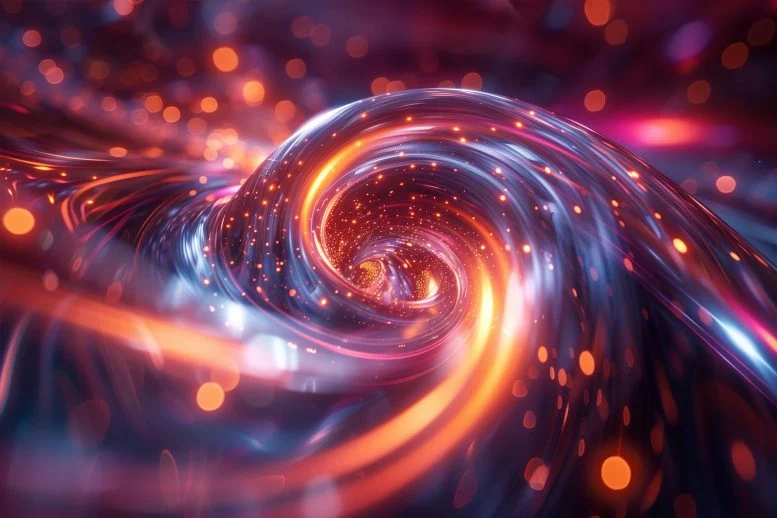
By University of Birmingham November 15, 2024
Collected at: https://scitechdaily.com/new-quantum-spin-liquid-discovery-opens-doors-to-uncharted-magnetic-realms/
Scientists have pioneered a new material based on ruthenium that demonstrates complex, disordered magnetic properties akin to those predicted for quantum spin liquids, an elusive state of matter.
This breakthrough in the study indicates significant potential for the development of quantum materials that transcend classical physical laws, providing new insights and applications in the quantum realm.
Novel Quantum Materials
Scientists have successfully developed a new approach to creating materials with complex, “disordered” magnetic properties at the quantum level. For the first time, they have produced a material that meets the requirements for the elusive “Kitaev quantum spin liquid state,” a phenomenon that has puzzled researchers for decades.
This breakthrough, published today (November 15) in Nature Communications by scientists at the University of Birmingham, marks a significant step toward designing and controlling quantum materials with unique properties that defy classical physics.
Understanding Magnetic Interactions
Crucially, the material offers a new way to explore magnetic properties that differ fundamentally from conventional ferromagnets, which are ordered around two magnetic poles. In traditional ferromagnets—like the familiar bar magnets on fridges or noticeboards—electrons interact to align in the same direction, creating the magnetic force. By contrast, these new materials exhibit disordered magnetic behavior, opening exciting possibilities in quantum science and technology.
Quantum spin liquid materials have magnetic properties that don’t behave in that way. Instead of the well-ordered characteristics of ferromagnets, these materials are disordered and the electrons within them connect magnetically via a process called quantum entanglement.
Experimental Breakthroughs and Challenges
Although quantum spin liquids exist in theory and have been modeled by scientists, it has not previously been possible to produce them experimentally or to find them in nature.
In the new study, researchers describe the properties of a novel ruthenium-based material that opens up new pathways for exploring these states of matter.
Lead researcher Dr. Lucy Clark explains: “This work is a really important step in understanding how we can engineer new materials that allow us to explore quantum states of matter. It opens up a large family of materials that have so far been underexplored and which could yield important clues about how we can engineer new magnetic properties for use in quantum applications.”
Theoretical Foundations and Practical Limitations
While there are a number of naturally occurring copper minerals and mineral crystal systems in which scientists believe quantum spin liquid state might exist, these have not been proved due to the additional structural complexities found in nature. The complexity of quantum spin liquids poses difficulties for theorists too, because modeling results in many competing magnetic interactions, which are extremely difficult to untangle, causing disagreement among physicists.
A model produced by the theoretical physicist Alexei Kitaev in 2009 was able to demonstrate some foundational principles for quantum spin liquids, however, the magnetic interactions it described required an environment that scientists have been unable to produce experimentally without the materials reverting to a conventionally ordered magnetic state.
It is thought this behavior is connected to the densely packed crystal structures of candidate materials. Because the ions are packed so closely together they are able to interact directly with each other, resulting in them reverting to magnetic order.
Opportunities in Material Science Research
Using specialist instruments at the UK’s ISIS Neutron and Muon Source, and Diamond Light Source, the Birmingham-based team was able to show that a new material with an open framework structure can tune the interactions between the ruthenium metal ions, providing a new route the Kitaev quantum spin liquid state.
Importantly, the magnetic interactions produced within these more open structures are weaker than they might otherwise be, giving scientists more scope to tune their precise behaviors.
“While this work has not led to a perfect Kitaev material, it has demonstrated a useful bridge between theory in this field and experimentation, and opened up fruitful new areas for research,” added Dr. Clark.
Reference: “Kitaev Interactions Through Extended Superexchange Pathways in the jeff = 1/2 Ru3+ Honeycomb Magnet RuP3SiO11” 15 November 2024, Nature Communications.
DOI: 10.1038/s41467-024-53900-3

Leave a Reply